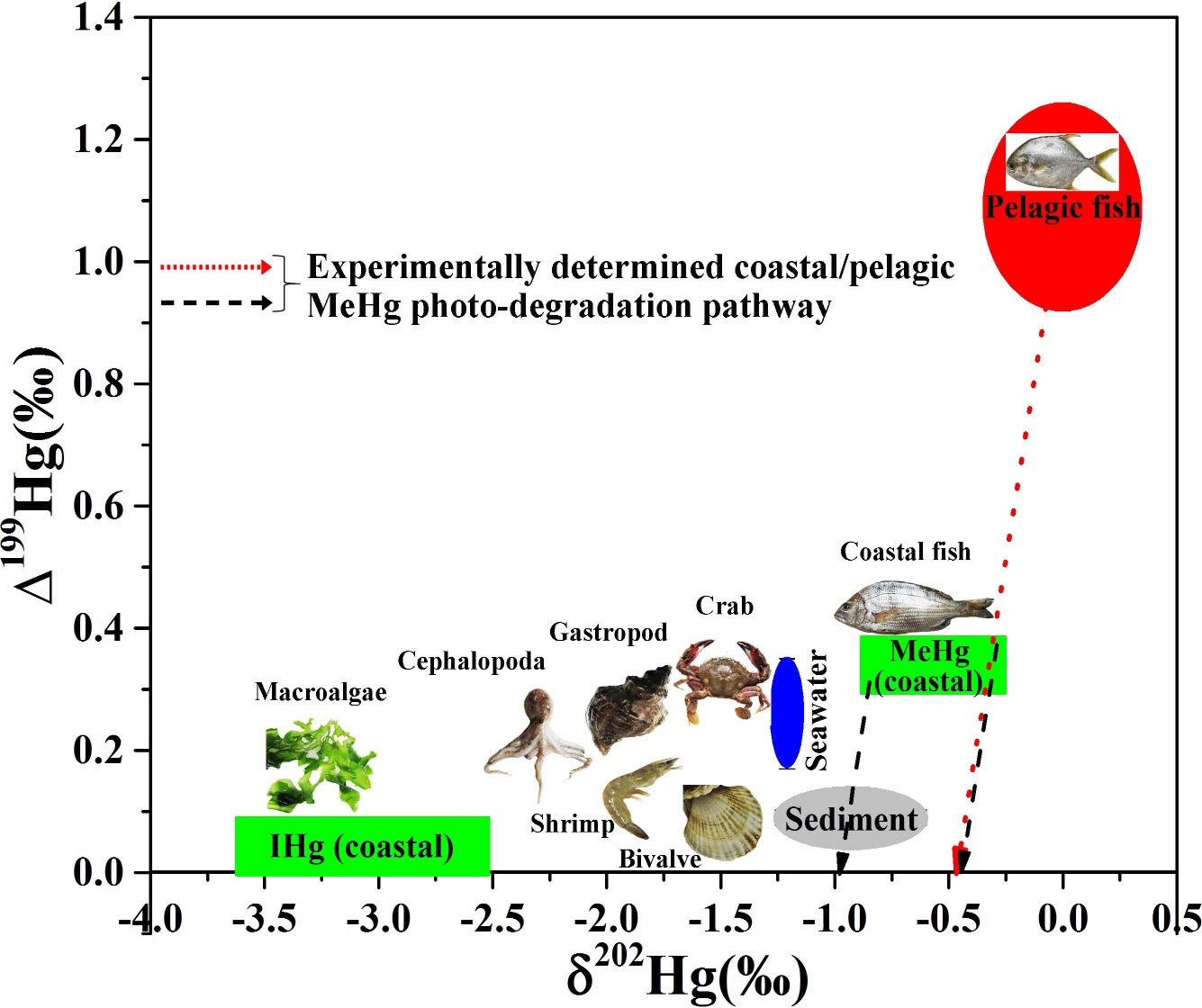Studies show that mercury (Hg) concentrations in the upper ocean (0-1000m) has now become 2.5 times that of pre-industrial level. Since the inorganic Hg could be transformed into methylmercury (MeHg, the most toxic Hg form) through microbial and chemical methylation, elevated inorganic Hg is expected to increase the production of MeHg in the oceans. The produced MeHg could be bio-accumulated into organisms of lower trophic levels and further bio-magnified by several orders of magnitude via predator-prey relations along marine food chains, posing potential risks to human health. Better information on sources and dynamics of Hg (especially MeHg) in marine food webs is crucial to assess the environmental effects of anthropogenically emitted Hg.
Dr. Meng Mei, Prof. Sun Ruoyu and Prof. Chen Jiubin from Tianjin University’s Institute of Surface-Earth System collaborated with researchers from the Research Center for Eco-Environmental Sciences at the Chinese Academy of Sciences and investigated a large-scale food web (macroalgae/hydrophyte, mollusks,crustaceans (shrimp, crab), coastal/pelagic fishes), seawater, and sediment from Chinese Bohai Sea. They analyzed the speciation and isotope composition of the mercury along with ecological tracers such as carbon and nitrogen isotopes. The results show that the MeHg concentrations in most of the marine biota in the Bohai Sea are lower than the maximum permissible limit of MeHg for seafood in China, which are therefore safe to eat; the trophic transfer of MeHg in food webs is unlikely fractionate Hg isotopes, providing a solid theoretical basis for tracing the geochemical transformation of Hg in aquatic environments using Hg isotope composition in food webs; and MeHg in the Bohai food web was likely derived from the methylation of inorganic Hg in marine sediments, while the contribution from methylation of inorganic Hg in seawater was not significant, provides a theoretical basis for future environmental management. Interestingly, the researchers observed for the first time significant negative anomalies in mass independent fractionation of 200Hg, providing new insights in using even Hg isotopes to study the Hg cycling in marine food webs.
The research was published in the Journal of Hazardous Materials with the title of Mercury isotope variations within the marine food web of Chinese Bohai Sea: Implications for mercury sources and biogeochemical cycling.
Access via link: https://doi.org/10.1016/j.jhazmat.2019.121379

By the Institute of Surface-Earth System
Editors: Eva Yin & Doris Harrington






